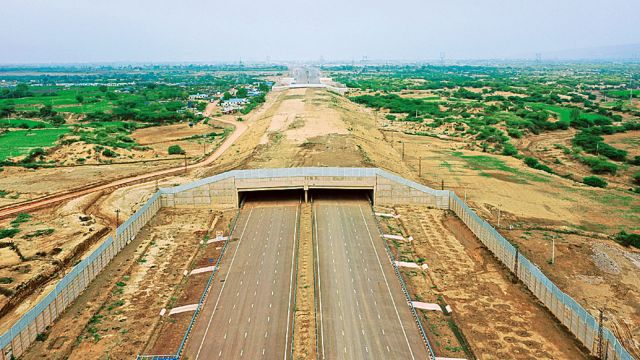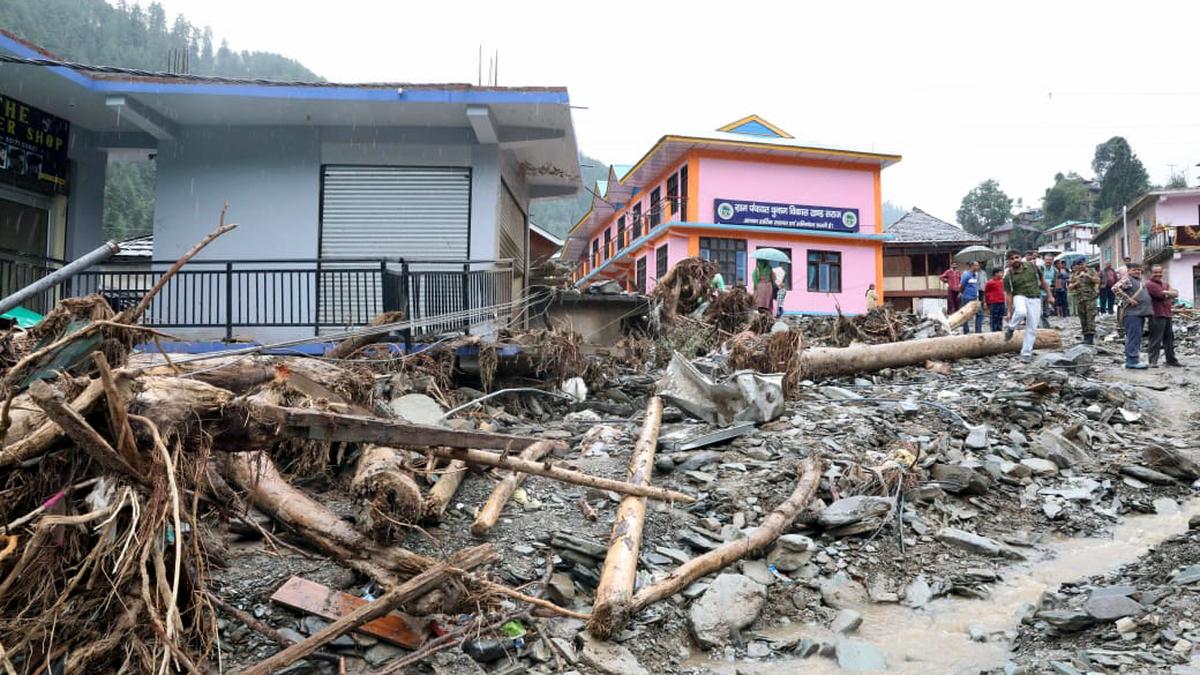ARTICLE AD BOX
 An animal overpass in Rajasthan’s Bundi district. (NHAI)
An animal overpass in Rajasthan’s Bundi district. (NHAI)
On a nearly 12-km stretch of the Delhi-Mumbai Expressway that falls in the Ranthambore Tiger Reserve’s buffer zone lie five identical mound-like structures. Standing between Bundi’s Hardeoganj village and the Major Bridge on Mej river, these structures — 500 metres long and connected by the road — serve a unique purpose: to allow a safe passage for wildlife as well as vehicles, without impeding either.
Touted as India’s first large-scale animal overpasses, these mounds are part of a key section of the ambitious 1,386-km-long Delhi-Mumbai Expressway. Executed by Larsen & Toubro (L&T) under the National Highway Authority of India’s (NHAI) Bharatmala Pariyojana project, these overpasses will be opened to the public in five months, officials said. Apart from the five overpasses, the project includes a 1.2-km-long animal underpass.
According to a senior official of L&T, while the initial project in 2020 did not factor in these structures, the NHAI eventually revised its plan based on suggestions made by the Wildlife Institute of India (WII).
The structures will be camouflaged with grass and shrubs, the seeds of which have already been sown, the official said. Other highlights include use of noise barriers on the boundary wall of the highway and Polyurethane (PU) mats — known for their sound-dampening and noise-reducing properties — on the tunnel walls.
“Constant noise from traffic can lead to disorientation, anxiety, and interference with essential animal activities such as feeding, mating and nesting…The boundary wall is four metres high, with an additional two metres of noise barriers to prevent vehicular sounds from seeping out. The overpasses have been built in such a way that animals would not be able to tell the difference. This will help them go from one side to another without hindrance,” he said.
Given that the stretch ran through an eco-sensitive zone, officials said they encountered several challenges. One of these was to relocate a 765 kV high-tension line passing through the animal underpass and wildlife sanctuary zone.
“It was a sensitive task due to its location within a protected ecological area. The project runs through the buffer zone of the Ranthambhore Tiger Reserve, Chambal Ghadiyal, and Papdi Forest Area. Multiple wildlife species, including bears and tigers, were encountered during construction activities. It was our responsibility to ensure both the animals and the workers were safe,” said Pardeep Atri, regional officer of NHAI at Jaipur.
Story continues below this ad
The project also required stringent compliance with environmental regulations and continuous coordination with forest authorities. Among these requirements was installing cameras every kilometre to monitor the movement of animals.
While this particular stretch of the expressway was completed in December 2023, there are some other portions where work is still ongoing, he said.
“We are planning to make the overpasses operational in around five months. Our target is to achieve one lakh Passenger Car Unit (PCU) on this section in the next 4-5 years,” the NHAI official said.
The Delhi-Mumbai expressway connects major economic centres within Delhi, Uttar Pradesh, Haryana, Rajasthan, Madhya Pradesh, Gujarat and Maharashtra. According to the Detailed Project Report (DPR), the expressway will cut down the distance between Delhi and Jawaharlal Nehru Port Terminal (JNPT) near Mumbai by about 180 km and reduce travel time by up to 50 per cent.
Story continues below this ad
According to the NHAI, 82 per cent of the total expressway is complete, with the project deadline now pushed back to October this year from March 2023.
Dheeraj Mishra is a Principal correspondent with The Indian Express, Business Bureau. He covers India’s two key ministries- Ministry of Railways and Ministry of Road Transport & Highways. He frequently uses the Right to Information (RTI) Act for his stories, which have resulted in many impactful reports. ... Read More



.png)
.png)
.png)



























 English (US) ·
English (US) ·